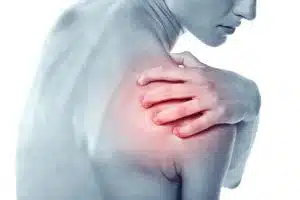Summer is coming, along with plenty of outdoor sports and activities. But athletes need to be aware of their bodies; many summer sports can cause shoulder injuries, particularly if played several times a week.
While different “overhand” or “overhead” sports – think any sport that requires arm rotation, like swimming, tennis, volleyball and baseball, especially baseball pitching – use different muscle mechanics, all such sports can lead to shoulder instability. Repetitive rotating motion can cause the shoulder ligaments to loosen, and possibly even dislocate the shoulder.
“Pay close attention to how your shoulder feels when playing your sport,” says Gabriel Enescu, physical therapist and owner of Excel Physical Therapy in Lodi, CA. If the shoulder feels loose, or if a quick pain is felt when raising your arm overhead, like something is slipping or pinching in the shoulder, this could be subluxation of the shoulder, and something that would require treatment with a physical therapist.
Frequent use (or overuse) of the shoulder can cause several problems in the rotator cuff, which are the four muscles that surround the shoulder along with the tendons that connect these muscles to the scapula, collarbone and upper arm.
Impingement. Swimmers, tennis players and even golfers run the risk of shoulder impingement. “Frequent shoulder rotation can cause swelling of the bursa, a lubricated sac of tissue that cuts down on the friction between two moving parts. In this case, the bursa protects the scapula and the rotator cuff muscles from grinding against each other,” says Gabriel. As the bursa swells, the shoulder discomfort and pain increases; some patients say the pain is bad enough to interrupt sleep, especially if rolling onto the affected shoulder. Such pain is a sign to seek treatment from a doctor or physical therapist.
Tendonitis. Tennis players can develop tendonitis of the rotator cuff. This happens when the tendons attaching the rotator cuff muscles to the surrounding bones start to degenerate, possibly from a lack of oxygen. Like many of these shoulder problems, it presents as shoulder pain, but could lead to a tear in the tendon, so it can have serious repercussions.
Rotator cuff tears. These occur when the tendons in the rotator cuff are torn or completely severed. It can occur through overuse of the shoulder, especially in sports that use a high degree of force during rotation, like tennis or baseball. Rotator cuff tears cause pain and weakness in the affected shoulder. Gabriel notes that after a partial rotator cuff tear, the shoulder may be painful, but the arm still has a normal range of motion. In general, she adds, “the larger the tear, the more weakness and loss of range of motion it causes.”
Baseball players, especially pitchers, are particularly prone to shoulder injuries. In addition to those issues mentioned above, baseball players are also at a higher risk of labral tears and quadrilateral space syndrome:
The labrum is a layer of tissue that cushions the socket of the scapula from the humerus, the upper arm bone. Wear and tear from throwing a baseball can thin out the labrum, leading to alabral tear. It can also be caused by the shoulder dislocating, or excessive force on the joint(like during a fall). Gabriel says, “The main symptom caused by a labral tear is a sharp pop or catching sensation in the shoulder during certain shoulder movements. This may be followed by a vague aching for several hours.” Even if the injury doesn’t cause any pain, she adds, it cancause the shoulder joint to feel loose, or like it slips with certain movements.
Quadrilateral space syndrome is related to the nerves in the shoulder. Caused by overuse, it occurs when the axillary nerve, which originates in the armpit and wraps around the upper arm, becomes compressed or injured. It’s usually caused by bands of extra muscular fibers compressing the nerve, or sometimes by a dislocated shoulder. Cristina describes the symptoms as including vague shoulder pain, numbness or tingling in the arm, and tenderness to pressure over the area of the quadrilateral space. They could also include a dull ache in the shoulder that worsens when the arm is moved overhead repeatedly, or weakness and instability.
Often, these problems can improve without surgery through physical therapy and rehabilitation, especially if treatment is sought as soon as the shoulder pain begins. Note that many of these injuries are cited as a result of overuse; the more intense your sport is, the more you should rest between games or events. The biggest lesson is to listen to your body: If you have shoulder pain that continues after a day or two of rest, see your physical therapist or doctor to discuss what you can do in order to get back onto the playing field — without pain or further injury.
You can find more information about these conditions in the Patient Education section of our site.



